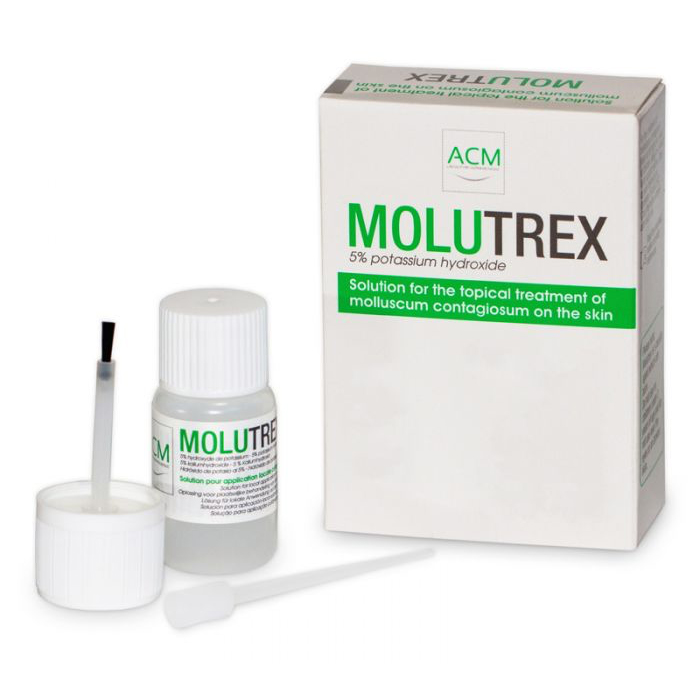The blisters are easy to recognise and tend to appear in clusters. Left untreated they will disappear on their own in the majority of cases, and whilst each individual blister may last about 2-3 months, new blisters appear nearby. Because of this, total clearance can take up to 2 years as new blisters keep appearing. As a result, many people are unwilling to leave it to chance as the blisters can look unsightly and remain infectious.
The virus produces clusters of dome shaped umbilicated lesions which can look like belly buttons.
The individual blisters are discrete, smooth, and generally skin coloured. The central depression or umbilication contains a white, waxy curd-like core which contains the viruses.
The size of the blister is variable, depending on the stage of development, usually averaging 2–6 mm in diameter.
They are often grouped in small areas but may also become widely disseminated. An average cluster will contain up to 20 or so blisters.

Any skin surface may be involved, but favoured sites include the arm pits, behind the knees and elbows and the upper thigh.
Whilst the blisters are not generally painful they can be itchy or feel a bit sore.
It is common to transfer the virus from one body site to another by touch. Children usually acquire molluscum from direct contact with an infected playmate or from inanimate objects such as a shared towel.
Around 10% of cases develop an eczematous dermatitis around the lesions, but this disappears as the infection resolves.
Parents often request treatment for their children and express concern about the infection spreading. Children do not have to be kept away from school even though the blisters may appear unsightly and there is a possible risk of transmission.


